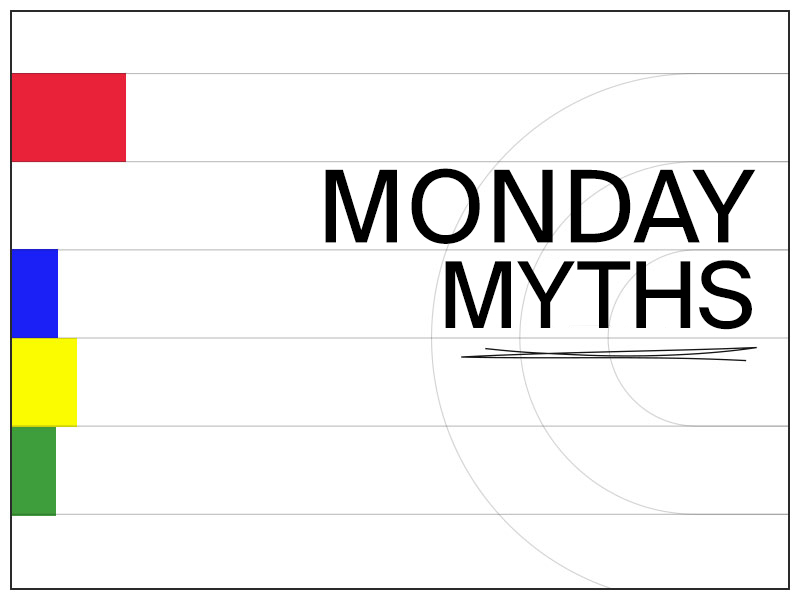by Jeremy Plonk
June 21, 2021

Welcome to a continuing handicapping series for our Monday blog space, “Monday Myths.” Each week I’ll use the power of the Betmix database to take common handicapping assumptions and either support or dispel them with data. Betmix data powers the 1/ST BET app and its features like Angler and Birddog give data-minded horseplayers a treasure trove of information in which to query your own curiosities.
Assumption:
Horses need more time to recover between starts during the heat of summer.
Background:
The taxing nature of summer temperatures, and a horse population largely running on the diuretic Lasix, are believed to be reasons why it’s tougher to bounce back from an effort this time of year as we turn into the hot summer months.
Data Points:
I dialed up the Betmix database to track return days of a very short nature (14 days or less), short nature (21-28 days), average nature (29-42 days) and extended nature (43-56 days). I looked at the performance of all horses nationally at all class levels in each of those return spans by each season on the calendar. For seasons, I used Jan-Feb-Mar as winter; Apr-May-June as spring; July-Aug-Sep as summer; Oct-Nov-Dec as fall. We looked at the past 4 years of data going back to the start of 2017 through 2020.
Winter Return Days
Horses with very short return days (14 days or less) won 11.4% with a $0.74 ROI for every $1 bet.
Horses with short return days (21-28 days) won 13.3% with a $0.75 ROI for every $1 bet.
Horses with average return days (29-42 days) won 13.3% with a $0.71 ROI for every $1 bet.
Horses with extended return days (43-56 days) won 13.3% with a $0.74 ROI for every $1 bet.
Spring Return Days
Horses with very short return days (14 days or less) won 12.4% with a $0.75 ROI for every $1 bet.
Horses with short return days (21-28 days) won 14.1% with a $0.76 ROI for every $1 bet.
Horses with average return days (29-42 days) won 14.5% with a $0.75 ROI for every $1 bet.
Horses with extended return days (43-56 days) won 14.5% with a $0.77 ROI for every $1 bet.
Summer Return Days
Horses with very short return days (14 days or less) won 12.3% with a $0.70 ROI for every $1 bet.
Horses with short return days (21-28 days) won 14.1% with a $0.78 ROI for every $1 bet.
Horses with average return days (29-42 days) won 14.4% with a $0.76 ROI for every $1 bet.
Horses with extended return days (43-56 days) won 13.6% with a $0.70 ROI for every $1 bet.
Fall Return Days
Horses with very short return days (14 days or less) won 11.6% with a $0.74 ROI for every $1 bet.
Horses with short return days (21-28 days) won 12.8% with a $0.78 ROI for every $1 bet.
Horses with average return days (29-42 days) won 13.2% with a $0.79 ROI for every $1 bet.
Horses with extended return days (43-56 days) won 13.0% with a $0.75 ROI for every $1 bet.
Overall Findings:
Horses returning on the shortest layoffs (14 days or less) had the lowest win percentage in each of the four seasons. The difference in win percentages between short, average and extended returns were negligible in all four of the seasons, but slightly more pronounced in summer – where extended layoff horses fared .5% and .8% worse than those off short and average returns.
Bottom line:
Nothing jumps off the page in terms of seasonal influence when it comes to the success or failure of horses returning from varying lengths of rest. Summer horses coming off the shortest layoff (14 days or less) performed as well or better than other seasons; the same goes for those off 21-28 days, and the 29-42 day breaks. The numbers do indicate that it’s a falsity to assume that a horse running back on short rest in the summer is statistically compromised.
Additional Details:
You can go into Betmix and run your own queries for a deeper dive into this theory and any that you can create. For instance, which trainers do best at various levels of layoff and by season? The Betmix database shows Kelly Von Hemel (48%) and Dale Capuano (42%) are among the very best at summertime (July-August-September) returns from 14 days or fewer. You could sort this study by race class, distance or track to hone it in for the circuit and races you follow.